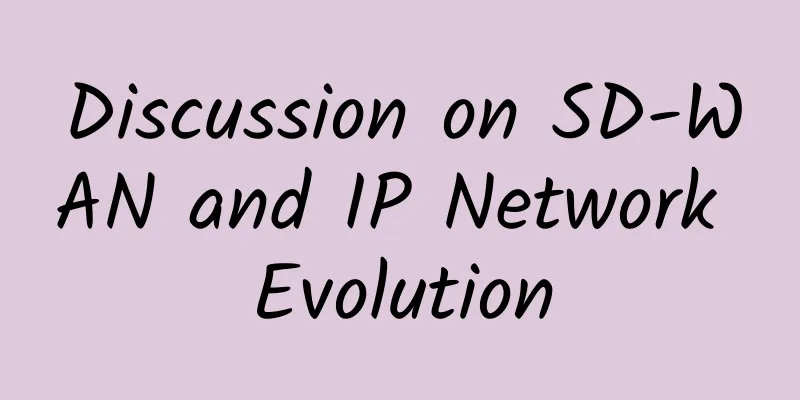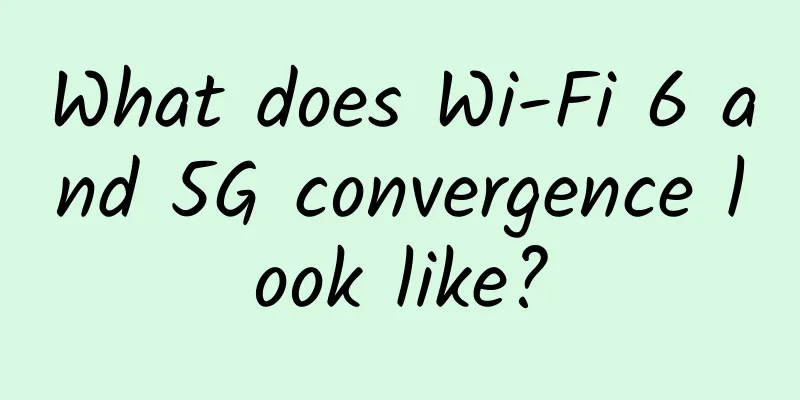5G gas stations require mid-band frequencies

|
If an industry wants to develop, the first thing it must solve is the energy problem. The energy source for the steam revolution was coal, the energy source for the electrical revolution was oil and electricity, the energy source for the digital revolution was data and computing power, and the energy source for wireless communications is spectrum. If wireless communications and the mobile industry want to move forward, the more spectrum resources there are, the better. However, spectrum itself is a non-renewable, fixed resource, while mobile networks are constantly evolving. Therefore, how to plan and allocate spectrum for each generation of networks has become a key strategic issue for each country, just like energy supply. The newly emerging 5G is looking for a new gas station. On May 17, the Global System for Mobile Communications Association (GSMA) jointly issued a statement with Huawei, ZTE, Ericsson and Nokia, calling on governments to use 6 GHz as a new IMT licensed spectrum, otherwise it would be detrimental to the common development of global 5G. Many friends may be curious. 5G has been commercially deployed and has become a part of daily life. Shouldn't spectrum allocation be completed long ago? A few years ago, we witnessed many debates about 5G spectrum resource allocation. How come it's 2021, and spectrum is still not over?
There is a key logic here: 5G is not a one-off deal, but an ongoing industrial process. Since 5G itself has been proven to have stronger "power", and this "power" is to be fully activated, more spectrum, especially mid-band, is needed as a refueling station. The 6GHz mentioned in the statement represents the mid-frequency band. Why is 6GHz important for 5G? What value can it bring to the 5G economy? Where is the push for 6GHz licensed IMT today? Let’s discuss these topics today and gain insight into the “energy delivery” action in the 5G process. 5G and above, value not yet reachedLet’s go back to the beginning of the story and talk about the relationship between 5G standards and spectrum resources. As we all know, there was a big discussion around the world about which frequency band 5G should be built on, and the industry division still exists today. Due to the significant disadvantages and development bottlenecks of millimeter waves, such as insufficient coverage, insufficient penetration, and susceptibility to signal obstruction, in most countries and regions, 5G is built on the Sub-6G solution of 450 MHz–6000 MHz, that is, in the low frequency band. Low-frequency network construction ensures the coverage breadth and cost-effectiveness of 5G industry investment, but it does not mean that 5G should only stay in low frequency. The basic difference between high frequency and low frequency is that the higher the frequency band, the greater the communication carrying capacity and the better the data transmission effect. On the contrary, the smaller the coverage area, the worse the transmission pass rate. In the early stage of 5G network construction, of course, the goal is to quickly lay out and complete basic coverage, but when 5G needs to develop further, it must consider multi-frequency development, that is, the necessity of improving transmission capacity. Especially when 5G is combined with the industrial Internet, AI, and cloud computing, and fully exposed to various industry scenarios, the characteristics of large bandwidth and low latency are synonymous with industrial precision, in other words, they are the direct conversion of 5G value. Taking intelligent transportation scenarios such as high-speed rail and airports as an example, intelligent technology can bring about a significant improvement in transportation efficiency, but it must be based on a wireless network with an accuracy of 4 9s or even higher. To explore the deterministic value at this level, 5G cannot just stay at low frequency, but needs to embrace the coordinated development of multiple frequency bands. This leads to a key issue: between high-frequency millimeter wave and low-frequency solutions, there is still a mid-frequency range to be developed. Since frequency band resources are fixed resources, they must be developed in batches step by step. When to invest which frequency band in which network construction is a great test of the strategic insight of the global industry and governments. Judging from today's needs, 5G will definitely require increased investment in spectrum resources. With the rapid development of 5G construction and applications, new spectrum is urgently needed, and 6GHz can solve the problem. For the growing demand and value of 5G, sufficient spectrum resources are a necessary requirement for business development. With the popularization of 5G networks, the ultimate experience and the average monthly traffic consumption of users have shown a clear positive correlation. 100Mbps bandwidth anytime, anywhere is becoming a basic demand of consumers. Take South Korea as an example. In the first year of 5G development, the average monthly data traffic consumption of users has reached three times that of 4G. At this rate of development, operators must obtain more spectrum resources to support the growth of service experience and business scale. If the increase in new services is taken into account, the necessity of investing in 5G mid-band will be further strengthened. For example, an autonomous vehicle will generate about 1TB of data in 8 hours, and a large part of this data will be stored and calculated based on wireless networks, which poses a huge challenge to the existing 5G spectrum. From the perspective of the development cycle in the next 5 to 10 years, 5G evolution requires investment in medium-frequency resources to ensure that network capacity and coverage scale are in a balanced state, so that quality and quantity can go hand in hand. This is why more and more countries, industrial organizations, and related companies are making similar calls today. For all parties concerned, what is more important today is that as the value of 5G begins to be harvested at an accelerated pace, the value of 5G becomes increasingly apparent, and the strategic confidence in enabling medium-frequency bands continues to strengthen. Today, we can see that 6GHz has multiple deterministic values. What possibilities does 6GHz bring?It should be noted that the 6GHz frequency band network is not a 6G network, but a 6GHz frequency band network. Regarding the use of this frequency band, the industry has three main views: use it for Wi-Fi, grant it to 5G, and be cautious about it. For 5G, large capacity and high transmission speed have been proven to be necessary in the benefit model of commercial networks. The necessity of 6GHz is constantly increasing in the evolution to 5.5G and 6G. In general, 6GHz is a new frequency band that takes into account both coverage and capacity advantages. It can fully unleash the basic capabilities of 5G and generate more deterministic network value. In general, 6GHz can bring three core values to 5G: 1. Industrial 5G gains value-added development space5G has always been the value pursuit of all walks of life to change society. In the past two years, Huawei alone has cooperated with joint operators to complete more than 100 5GtoB cases, covering more than 10 sub-industries such as home appliances 3C, steel, cement, petrochemicals, and automobiles. The development of industrial 5G has proved that 5G is increasingly irreplaceable in the fields of smart cities, industrial AI, and industrial Internet. In order to continue to enhance the development potential of these key industries, it is necessary to continue to release the high-speed characteristics and large-capacity carrying capacity of 5G. According to a report, it is expected that 5G networks will require mid-band spectrum above 2GHz to fully release their potential. 5G changes society and requires the addition of new spectrum. 2. An incremental path for future evolutionThe future is bound to be a smart society that highly applies AI and IoT devices. The prospect of intelligence will bring many challenges to the network environment. 5G networks need to continue to develop and gradually move towards the network requirements of the 6G era. At present, the 3GPP organization has defined 5G-Advanced, and operators such as China Telecom have started research. The advanced capabilities and corresponding applications of 5G will definitely put forward further requirements for spectrum. For example, China Telecom has proposed three major 5G-Advanced technologies, including XR virtual interaction, mass live broadcast, broadband Internet of Things super uplink, and super sense for high-precision positioning, Internet of Vehicles, drones, and intelligent driving. These capabilities require 5G to move towards full frequency bands, and the rational use of the 6GHz frequency band is critical. To achieve the continuous evolution of the 5G industry and even move towards 6G, a smooth and progressive network upgrade process is required, which leads to the necessity of strategically driving the granting of medium frequency to 5G. 3. A hotbed for inclusive digital economyAnother significance of 5G value enhancement is that it can bring direct digital leapfrogging capabilities to remote areas and other areas where 5G network experience needs to be upgraded. For these areas, rural live e-commerce, distance education, digital medical care, and intelligent environmental protection all require large-bandwidth spectrum resources to ensure development space. Nowadays, a few short videos in the field may change the fate of a family. 6GHz should be incorporated into the industrial process during this critical period of digitalization. With these reasons as endorsement, we can see that 6GHz licensing has made encouraging progress. Let's take a look at how far this road has come. Embracing the IF, to what extent has it developed?Although there are still many countries and regions that have reservations about granting 5G the mid-band represented by 6GHz. For example, the United States seems to be more inclined to build 5G on millimeter waves and leave 6GHz for Wi-Fi. But in general, the situation today is that the better the 5G development and the more obvious the value of 5G, the more inclined countries and regions are to grant 6GHz to 5G, complete the combination of mid-band and mobile networks in advance, and give mobile networks a stronger driving force for development. This goal is also recognized by almost all mainstream industry organizations and core technology equipment suppliers in the communications industry. First of all, we can see that China is vigorously promoting the granting of new IMT in 6GHz. As early as December 2019, the Radio Management Bureau of the Ministry of Industry and Information Technology announced that, with the strong promotion of the Chinese delegation, the 2019 World Radiocommunication Conference (WCR-19) decided to add a new IMT (5G or 6G) usage label to the 6GHz (6425-7125MHz) frequency band and include it in the 1.2 agenda of the 2023 World Radiocommunication Conference (WRC-23). 3GPP has initiated research on incorporating the 6GHz band into the 5G standard. According to a GSMA survey, a large number of operators around the world recommend using 6GHz as a licensed spectrum. Ericsson, Huawei, Nokia, ZTE and other manufacturers have also issued statements supporting 6GHz. It can be said that regions with good 5G development and the 5G industry have reached a high degree of consensus on embracing medium frequencies. In the future, whether 5G is granted medium-frequency bandwidth may require many countries and regions to make interest judgments and geopolitical choices, but in the face of basic values, there is reason to believe that the voices of recognition will continue to grow. As one of the important means of standardization and scale-up in the communications industry, spectrum coordination can not only enhance the confidence and investment development intentions of equipment vendors and operators, but also provide impetus for the wider global digital industry to apply 5G and develop a 5G ecosystem. Ultimately, precious spectrum resources will gain the value they deserve. |
>>: UL launches Wi-Fi 6E testing service in Europe
Recommend
Happy New Year!
The rat has gone and the ox has come, bringing ne...
Justhost newly launched New York VPS, multiple data centers in the United States/Russia/UK/Germany/Hong Kong, China, etc. starting from $1.16/month
JustHost.asia sent information about the new VPS ...
Omdia’s view: 400G is ready as a carrier service
The latest report from market research firm Omdia...
Riverbed Launches Two New Visibility Solutions to Enable 360-degree View of Enterprise IT
[51CTO.com original article] Riverbed recently an...
List of the most common Internet SIM cards: Choose the right one and save a lot of money
At present, many Internet companies have joined h...
RTE2022 will open on November 1st. Agora releases the first professional book in the RTE industry, "Real-time Vientiane"
On October 27, the RTE 2022 Real-time Internet Co...
Selection of the most influential events in the communications industry in 2020
Looking back at the year 2020, there are many eve...
The interviewer asked about the ZAB protocol right away, and I was trembling...
[[391275]] Zookeeper achieves the final consisten...
High growth in network equipment in Q3 drove an 8.1% increase in cloud IT revenue
Currently, the pace of cloud data center construc...
Foreign media: South Korea encourages virtual network operators to participate in 5G competition
South Korea's Ministry of Information and Com...
EU plans to develop regulatory "blacklist" Facebook and Apple may be on the list
It is said that the EU's move is aimed at lim...
80VPS newly launched Japan CN2 line VPS, 2G memory package annual payment starts from 330 yuan
80VPS is a long-established Chinese hosting compa...
Eight data center technologies verified in 2015
2015 was a year in which new technologies matured...
In the 5G era, closed systems are also dangerous. There is no chance to upgrade or patch.
As traditional industrial control systems and equ...
Ten ways for Vue.js parent-child component communication
[[266702]] Interviewer: What are the ways for par...







![[Security Alert] Baota Panel suspected vulnerability or Nginx abnormality](/upload/images/67cabfe7c791c.webp)

